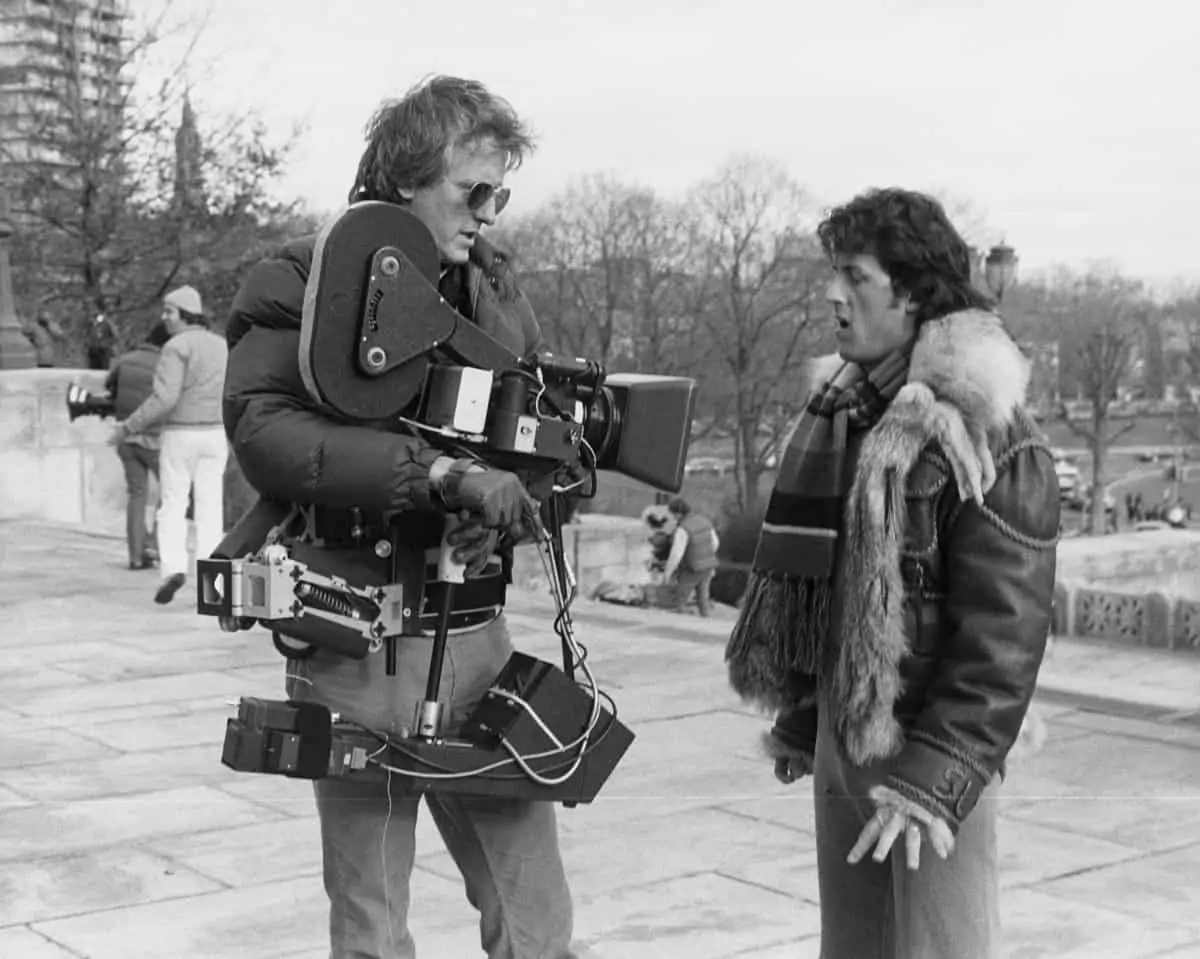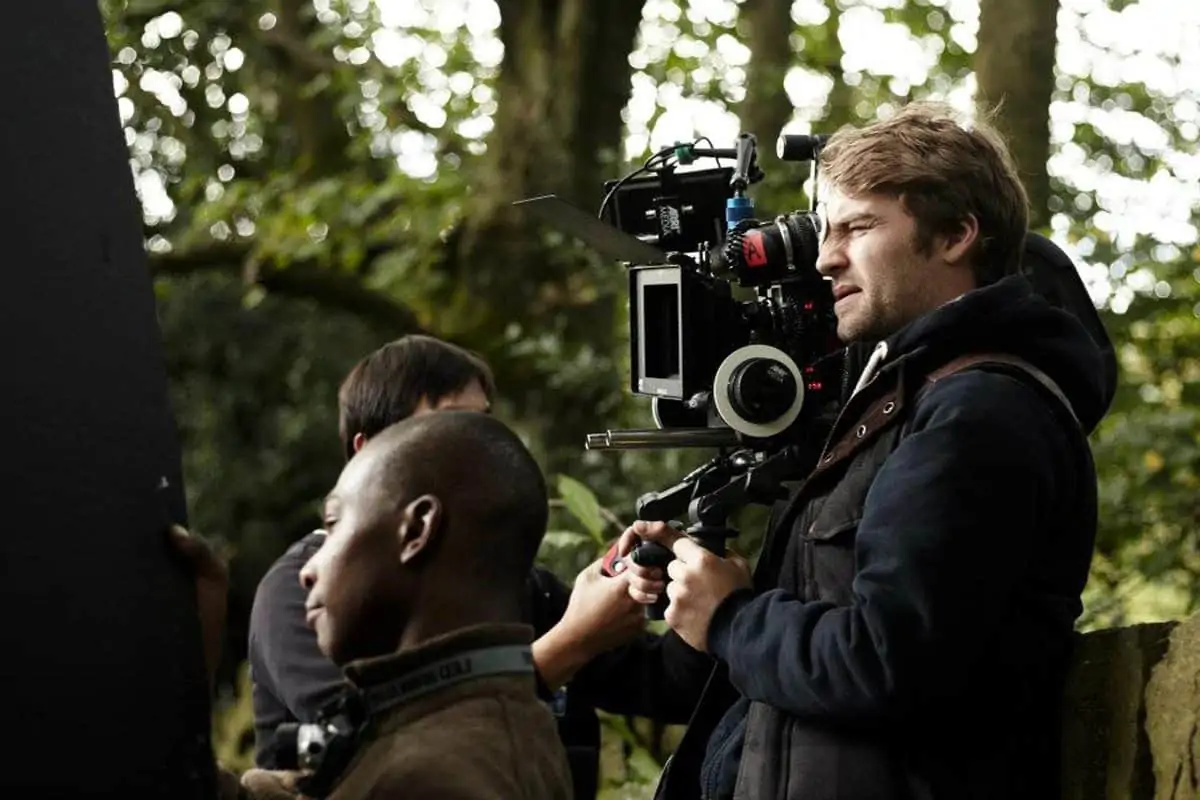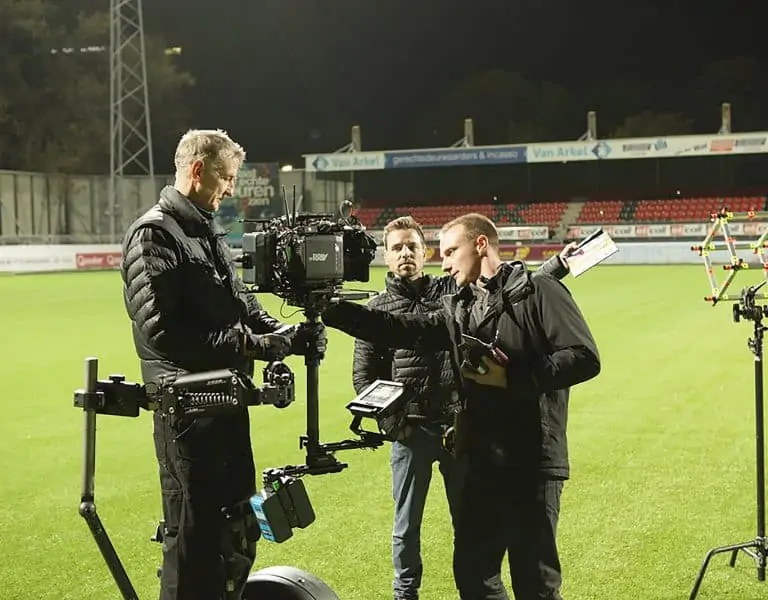Action man
Innovator / Garrett Brown

Action man
Innovator / Garrett Brown
BY: Adrian Pennington
Rocky Balboa ascending the steps of the Philadelphia Museum of Art in Rocky (1976). Young Danny Torrance riding his tricycle through the cavernous halls of the Overlook Hotel in The Shining (1980). Imperial storm troopers rocketing between trees on the forest moon of Endor in Star Wars: Episode VI – Return Of The Jedi (1983). What do these movie moments have in common? They were all filmed using the Steadicam and were all shot by the Steadicam’s inventor, Garrett Brown.
The Steadicam introduced a brand new vocabulary of camera movement into motion pictures and won Brown his first Academy Award in 1978. In 1985, the Washington Post, with only a slight hint of hyperbole, described the Steadicam as “the biggest thing since Technicolor”.
Yet the Steadicam was only the beginning of Brown’s innovations in camera-control technology. DiveCam put the viewer beside Olympic divers from their leap off the springboard to their plunge into the pool. And the MobyCam moved the audience underneath the water in sync with the athletes in competitive swimming events. In 2006, Brown received another Academy Award for Scientific and Technical Achievement for SkyCam, the aerial camera system which has become a staple of sports stadium broadcasts.
Looking at Brown’s early career, you would hardly imagine that he would revolutionise cinematography. He left college to pursue a calling in folk singing, even recording for MGM, but quit when The Beatles came along, he quips. With no job skills he ended up despairingly selling VWs. “I'd always loved movies and my wife agreed to keep working while I learned moviemaking by reading all the outdated film books in the Philly library,” he says.
Fast forward through bit-part employment as agency copywriter, commercial director and production start-up, complete with an 800lb ‘Fearless Panoram’ dolly to move his Bolex.
The Eureka moment has passed into legend. Fed-up with the cumbersome Fearless, Brown launched a project to isolate his handheld self from the camera. In 1972, he began experiments and had a functional object a year later.

“Even my big early versions worked astonishingly well, even though they were way too clumsy and burdensome to be commercially successful,” he recalls. “I finally went into a hotel for a week and looked at all the drawings over and over and forced myself to come up with a smaller, lighter version that could actually handle 35mm movie cameras. And the marvellous result was that, unlike most inventions, mine could be demonstrated without giving away how it worked. I could show the results — a reel of impossible shots — and just blow away anybody in Hollywood who knew what was possible and what wasn't, but give them no clue how it was done.”
The demo reel included shots of a friend swimming the length of a pool and his wife (then girlfriend) running across a park and up and down Philly Art Museum steps. Rocky director John Avildsen got hold of a copy and called Brown up to recreate the scene with Sylvester Stallone. The same year, 1975, Brown was hired to shoot Steadicam scenes in Bound For Glory for Hal Ashby and Marathon Man for John Schlesinger.
Having devised the Steadicam as a humble means to “rid himself of my big crusty old dolly”, Brown confesses to being astounded by his invention's present ubiquity and usefulness.
The somewhat rigid language of old linear moves, literally ‘on rails’, has given way, he admits, to a flowing vernacular “that transports movie narratives and more closely resembles the way humans - with our astonishing internal stabilisers - actually perceive our lives.”
Tracking shots were part of the lexicon of cinema long before 1975 of course. Directors like Orson Welles and the classic three and half minute opening sequence to Touch Of Evil (1958) or Alfred Hitchcock's experimental black comedy Rope (1948) composed of several single 10-minute film reels, have always sought to push the boundaries of cinematic time and space.
The Steadicam though freed the cinematographer to plot ever more complex and fluid compositions.

"Even my big early versions worked astonishingly well, even though they were way too clumsy and burdensome to be commercially successful."
- Garrett Brown
“My wife will nudge me in the middle of a particularly great Steadicam shot and it's still a thrill,” says Brown. “There are so many brilliant practitioners and it truly is an instrument, rather than just a stabiliser. It’s simply an elegant way to move an object in space, with a mass and weightlessness that could never be accomplished by hand. You guide it with your fingertips and the result is a really graceful, beautiful move. At its best, it's like a ballet for the lens. Of course it’s not curing cancer or ending WWII, but it's still extraordinarily useful and an immense amount of fun.”
A perfect example of immersive film-making (from Steadicam operator Larry McConkey) is the three-minute shot in Martin Scorsese’s Goodfellas (1990) in which Ray Liotta’s mobster leads his date into a nightclub through the exclusive back entrance, along winding corridors, through a busy kitchen and to a VIP table. While showcasing the supreme command Scorsese has over cinematic technique, the shot also invites the audience into the continuous hustle and bustle of the mobster's world.
Feature-length films like Alexander Sokurov’s Russian Ark (2002) have been filmed in one take, choreographed (after having to restart three times) by DP and Steadicam operator Tillman Büttner to render the finished piece more like a ballet.
“I can’t say I am necessarily enthralled with ‘one-ers’ unless they’re both sensible and valuable – nobody pays any attention to cuts, after all,” says Brown. “But the freedom to get the lens exactly where it’s wanted, to carry on up steps and over doorways in French curves that would drive a dolly crew berserk, remains completely seductive.”
There are so many great Steadicam shots, so asking Brown to select a personal top ten is like asking someone to choose which child they prefer. “I’ve just re-watched Joe Wright’s Pride And Prejudice (2005) and Simon Baker made some ravishingly beautiful and narratively perfect Steadicam sequences,” he says. “And The Revenant (2015) was astoundingly vital and gripping. Alejandro Iñárritu designed, and Scotty Sakamoto operated, some of my favourite sequences of all time.”

Brown, a member of American Society of Cinematographers, contributed to numerous features including Reds (1981), One From The Heart (1981), The King of Comedy (1982), Indiana Jones And The Temple Of Doom (1984), Casino (1995) and Bulworth (1998) before retiring from shooting in 2004 to concentrate on refining an arsenal of camera stabilisation supports for which he holds 50 patents. FlyCam is a high-speed point-to-point system; GoCam is a speedy miniature rail system and SuperFlyCam is an ultra light 35mm wire-borne flyer.
Brown's most recently released invention and his all-time favourite, was not however a commercial success. Tango is a miniature crane perched on a Steadicam arm that permits floor-to-ceiling shooting and “marvellously smooth” traverses. “You stroll along, panning and tilting with a camera-less ‘master’ sled in one hand and a pantographically controlled ‘slave’ sled on the far end, and the little lightweight camera perfectly follows your intended moves,” he describes.
“In the old days I used to take out all of my camera inventions and shoot impressively with them to jump-start sales. Since I retired from shooting, unhappily there has been no champion for Tango. However, I’m confident it will be revived eventually. It’s too good and too exciting and is huge fun to operate.”
When Brown started out, the technology for smooth camera movement were dollies, cranes and camera cars, all land bound. “Aerials [via helicopter] came with fierce propwash and needed lots of space,” he says. “Now, gyro technology lets even minuscule platforms yield eerily smooth shots; and though much of the operating is ‘legato’ to say the least, and thus a bit dreamlike, that will certainly improve.”
Filmmaking via drone has taken Hollywood by storm, much in the way Steadicam once did. Does Brown think UAVs might also affect the language of cinema in time?
“Humans unconsciously ‘operate’ their eyeballs with fierce authority, so even though drones may show us startling vistas, their ‘effect’ is often relatively druggy and tame,” he says. “Eventually pilots and operators will acquire the rapid and precise panning/tilting chops that are a given with Steadicam, and failsafe drones will finally come into their own as narrative tools.”

Brown believes that gyro-stabilising and remote-control, and even autonomously operating technology, are here to stay and will only become more and more astounding “until of course, we take it all for granted!” But he's savvy enough to realise that even Skycam will eventually be displaced “by harmless clouds of nearly invisible drones that swarm around football squads, each assigned to a hapless player whose only defence will be a badminton racquet!”
Brown still has several unreleased inventions, which may yet revolutionise Steadicam operation and continue to provide the most visceral control of both moves and framing.
“I learned long ago to only attempt what I personally want. What still interests me are the fundamentals – how we perceive moving images, for example. The externals of camera manipulation, rather than the internal particulars. I also think we should help people understand that inventing is something that almost any of us might do. You don’t necessarily have to be a technical soul; you just have to really want something and to be motivated enough to chase it with a little money and a lot of thought.”



